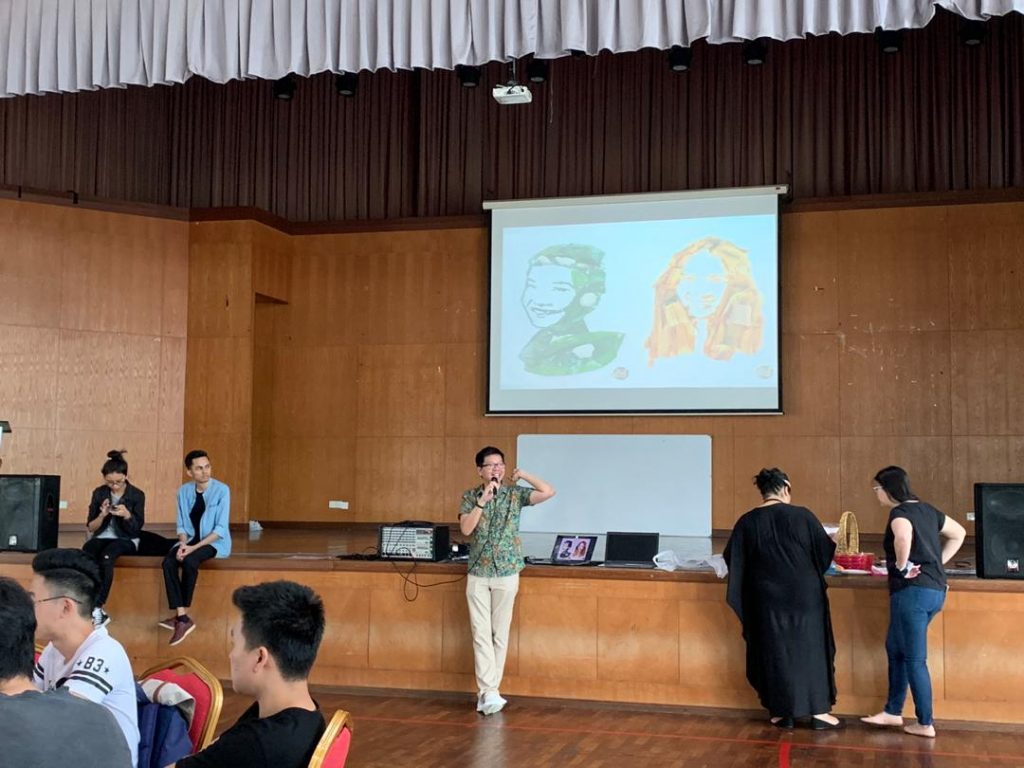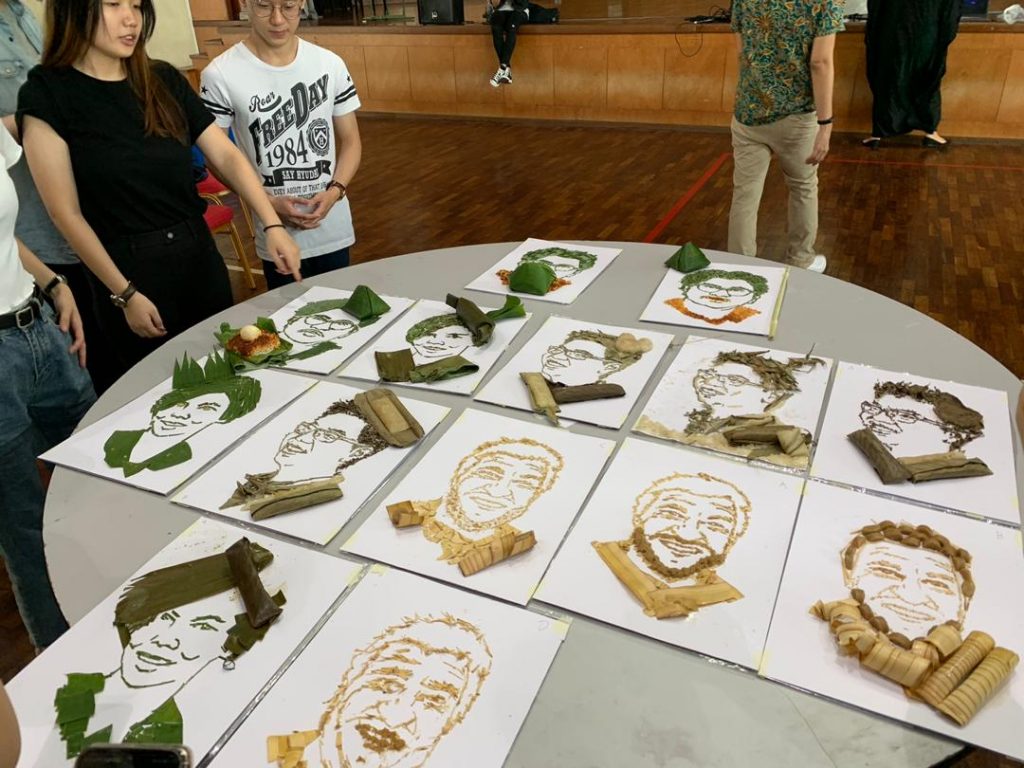Green Art Workshop with The Rojak Projek and Dr. Bernard
Many years now, people are still using plastics irresponsibly; littering bits and pieces of them here and there. Eventually, usage of plastics is the plague of environment. Lakes, rivers, and oceans are currently at the risk of being over-contaminated, which increases year after year. This problem is much more serious than expected – plastic pollution. Plastic pollution literary means a dangerous impact on human’s health, marine life, and the conditions on the existing ecosystems of the planet as a whole.
In this workshop, it started off with a brief presentation on the plastic pollution by the organizers. This aims to increase the students’ awareness on the plastic pollution which is still constantly neglected by people from all around the world. Of course, a few initiatives have been made by the authorities by imposing charges on plastic bags in supermarkets, encouraging the usage of recycling bag, and biodegradable plastic bags etc. Conventional plastic bags are made of petroleum, which is typically not easily degraded when they are disposed into the landfills. Therefore, this workshop emphasizes on how during the olden days, our ancestors uses natural resources such as leaves etc and made them into food wrappings.

Let us take “ketupat” as an example. Ketupat is Indonesian’s staple food – a type of dumpling made from rice packed inside a diamond-shaped container of woven palm leaf pouch. Ketupat is usually eaten with rendang, opor ayam, sayur labu (chayote soup) or sambal goreng hati (liver in sambal), or served as an accompaniment to gado-gado (mixed vegetables with peanut sauce). How healthy is that right? A combination of essential nutrients all in a folded palm leaf.

Participants were very excited about the upcoming activities making use of all materials given that were nicely placed on the table – traditional food from all over the states of Malaysia such as nasi lemak, ketupat, lontong etc. To add in a little bit of fun into the brain-storming session, samples of masterpieces previously done by others were shown in the slides. Each table was assigned with different sketches of faces on the paper, followed by outlining the face with whatever materials that were placed on the table.
The event was held for two hours, which honestly did not feel like it was two hours long as the whole itinerary was full of excitement and fun. From this event, participants definitely learnt the importance of teamwork while brain-storming with the rest of the students on how to decorate the paper with the materials provided. Furthermore, good events definitely come with a price, and it was a reasonable fee for most students.

The organizers were relatively pleased with all of our artwork. The cameraman was smiling behind the lens of the camera while he was taking photographs of the artwork done by all groups. The best piece of artwork will be chosen by the organizers to be posted up on their Facebook page. Not only it was fun, but the event was definitely worthwhile, nostalgic and meaningful. In my humble opinion, this is, by far, the best event I have attended throughout the semester.
